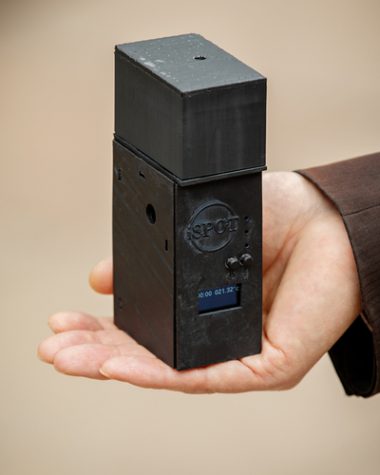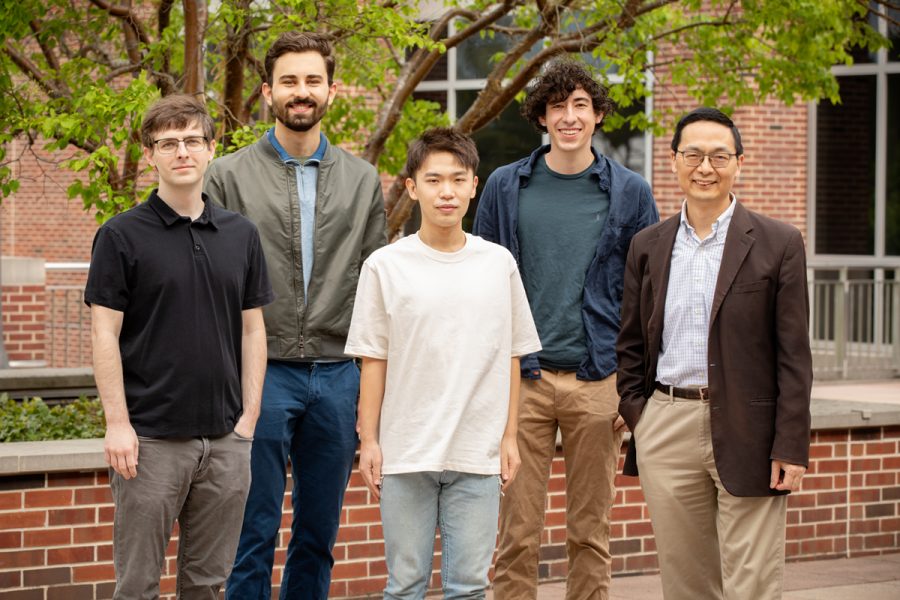New portable testing system allows for detection of COVID-19, other viruses
Photo Courtesy of L. Brian Stauffer/University of Illinois News Bureau
Human Zhao research group consisting of from front left, Stephan Lane, manager of the Illinois Biological Foundry for Advanced Biomanufacturing; graduate student Guanhua (Daniel) Xun; Huimin Zhao, the Steven L. Miller Chair of chemical and biomolecular engineering, and a professor of chemistry, biochemistry, biophysics, and bioengineering. In back, from left, electrical and computer engineering undergraduate student Vassily Petrov; and mechanical science and engineering undergraduate student Brandon Pepa, who recently graduated pose for a photo. The team created a portable Covid-19 testing device.
May 28, 2021
Researchers at the University have recently developed a new portable testing device capable of detecting COVID-19 in under 30 minutes. It uses a different mechanism to detect COVID-19 than the one found on campus to give more accurate and efficient results.
“COVID-19 is under control here in the U.S., but if you look at the other countries like India and Argentina, they are still suffering,” said Huimin Zhao, professor in Engineering. “So, they still need a lot of testing and detection methods.”
The researchers created a prototype device called Scalable and Portable Testing system that uses saliva samples to detect the presence of COVID-19.
The device is small enough to fit on the palm of a hand and was designed to be a household item, as described by Zhao. The idea behind it was giving families the opportunity to do COVID-19 testing at home when facilities were either too far or busy.
Currently in the early stages of development, the device costs around $70 to make and each test costs about $7 to make. It is a battery powered device, with some of its components being made by a 3D printer. Zhao described the cost not being an issue, as it will significantly decrease as mass production and manufacturing begins.
Get The Daily Illini in your inbox!

“There are many devices like ours out on the market, but they are all either not too accurate or not very portable,” Zhao said. “What’s unique about ours is the multiplexing capability allowing for the detection of multiple genes. This can allow the same device to detect COVID-19 as well as other viruses such as influenza.”
Zhao and his lab published their findings in a paper showing that in over 104 clinical salvia samples, the device had a 93.3% sensitivity and a 98.6% specificity rate. When tested on other viruses such as influenza, the device showed similar rates, highlighting its ability to detect multiple types of viruses.
With the wide availability of vaccines, Zhao described this device as not being as needed anymore for countries like the U.S. In the future when there is another pandemic, SPOT can be used to detect these infectious diseases and even certain cancers within the saliva samples.







